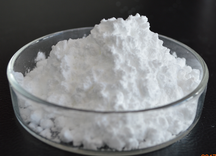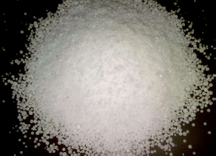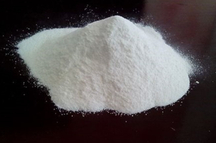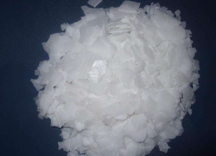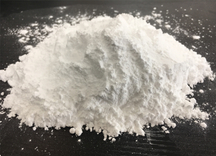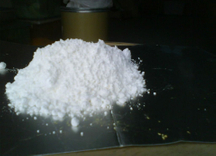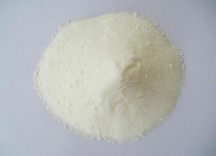
Adipic acid is a key component in the production of nylon and synthetic leather, playing a crucial role in the development of high-quality and durable synthetic materials. As the demand for synthetic leather continues to rise, understanding the importance of adipic acid becomes essential for manufacturers and consumers alike.
What is Adipic Acid?
Adipic acid, also known as hexanedioic acid, is a dicarboxylic acid with the chemical formula C6H10O4. It is a colorless, crystalline solid that is highly soluble in water and organic solvents. Adipic acid is primarily used as a precursor in the production of nylon and other synthetic fibers, as well as in the production of synthetic leather and other plastics.
The production of adipic acid involves the oxidation of cyclohexane or cyclohexanol, followed by the addition of nitric acid and hydrogen peroxide. This process results in the formation of adipic acid, which can then be purified and used in various applications.
Adipic acid is a key component in the production of nylon and synthetic leather, playing a crucial role in the development of high-quality and durable synthetic materials. As the demand for synthetic leather continues to rise, understanding the importance of adipic acid becomes essential for manufacturers and consumers alike.
What is the role of Adipic Acid in the production of synthetic leather?
Adipic acid plays a crucial role in the production of synthetic leather, contributing to its durability, flexibility, and overall quality. Synthetic leather is made by combining a polymer backing, usually made of polyurethane or polyvinyl chloride, with a top layer of polyurethane or a similar material. Adipic acid is used as a raw material in the production of the polymer backing, where it is combined with other dicarboxylic acids and diols to create a polyester or polycarbonate polymer.
The addition of adipic acid to the polymer backing helps to improve its mechanical properties, such as strength, flexibility, and abrasion resistance. It also helps to improve the polymer’s resistance to heat, UV radiation, and chemicals, making it more durable and long-lasting.
In addition to its role in the production of the polymer backing, adipic acid is also used as a plasticizer in the top layer of synthetic leather. Plasticizers are additives that are used to increase the flexibility and workability of a material. By adding adipic acid to the top layer, manufacturers can improve its softness, flexibility, and overall feel, making it more comfortable to wear and use.
Overall, the use of adipic acid in the production of synthetic leather is essential for creating a high-quality and durable material that can be used in a wide range of applications, from clothing and accessories to upholstery and automotive interiors. Its ability to improve the mechanical properties of the polymer backing and the feel of the top layer makes it an indispensable component in the production of synthetic leather.
What are the advantages of using Adipic Acid in synthetic leather production?
There are several advantages to using adipic acid in synthetic leather production, including:
1. Durability: Adipic acid helps to improve the durability of synthetic leather by increasing its resistance to abrasion, heat, UV radiation, and chemicals. This makes synthetic leather more long-lasting and suitable for a wide range of applications, from clothing and accessories to upholstery and automotive interiors.
2. Flexibility: Adipic acid is used as a plasticizer in the top layer of synthetic leather, which helps to increase its flexibility and workability. This makes synthetic leather more comfortable to wear and use, and allows it to better conform to the shape of the object it is covering.
3. Versatility: Adipic acid can be used in the production of both polyester and polycarbonate polymers, which gives manufacturers greater flexibility in terms of the types of synthetic leather they can produce. This versatility allows them to create synthetic leather with different properties and characteristics, depending on the specific application.
4. Cost-effectiveness: Adipic acid is a relatively inexpensive raw material that can be easily sourced and produced. Its use in synthetic leather production can help to reduce costs and improve the overall cost-effectiveness of the manufacturing process.
5. Environmental benefits: Adipic acid can be produced from renewable resources, such as corn or sugarcane, which makes it a more sustainable and environmentally friendly option compared to other raw materials. Its use in synthetic leather production can help to reduce the environmental impact of the manufacturing process and promote the use of more sustainable materials.
Overall, the use of adipic acid in synthetic leather production offers several advantages, including improved durability, flexibility, versatility, cost-effectiveness, and environmental benefits. These benefits make it an indispensable component in the production of high-quality and durable synthetic leather.
What are the different types of Adipic Acid available in the market?
There are several different types of adipic acid available in the market, each with its own unique properties and applications. Some of the most common types of adipic acid include:
1. Purity: Adipic acid can be produced in different purities, ranging from 98% to 99.9% or higher. Higher purity levels are generally preferred for applications that require strict quality control, such as the production of nylon and synthetic leather.
2. Particle size: Adipic acid can be produced in different particle sizes, ranging from fine powders to granules. The choice of particle size depends on the specific application and processing requirements.
3. Production method: Adipic acid can be produced using different methods, such as the oxidation of cyclohexane or cyclohexanol, or the hydrolysis of adiponitrile. Each production method may result in slight variations in the properties of the final product.
4. Packaging: Adipic acid is available in different packaging options, such as bags, drums, or bulk containers. The choice of packaging depends on the specific needs of the customer and the quantity of adipic acid required.
5. Supplier: Adipic acid is produced by several different manufacturers and suppliers worldwide, each with their own unique product offerings and pricing. It is important to choose a reputable supplier that can provide high-quality adipic acid that meets the specific needs of the application.
Overall, the different types of adipic acid available in the market offer a range of options for manufacturers and consumers, depending on their specific needs and requirements. Whether it is purity, particle size, production method, or packaging, there are several factors to consider when choosing the right type of adipic acid for a particular application.
Conclusion
In conclusion, adipic acid plays a crucial role in the production of high-quality synthetic leather. Its ability to improve the mechanical properties of the polymer backing, as well as its flexibility and overall feel, make it an indispensable component in the production of synthetic leather. With the rising demand for synthetic leather, understanding the importance of adipic acid is essential for manufacturers and consumers alike. By continuing to invest in research and development, manufacturers can create new and innovative synthetic leather products that meet the evolving needs of consumers.











